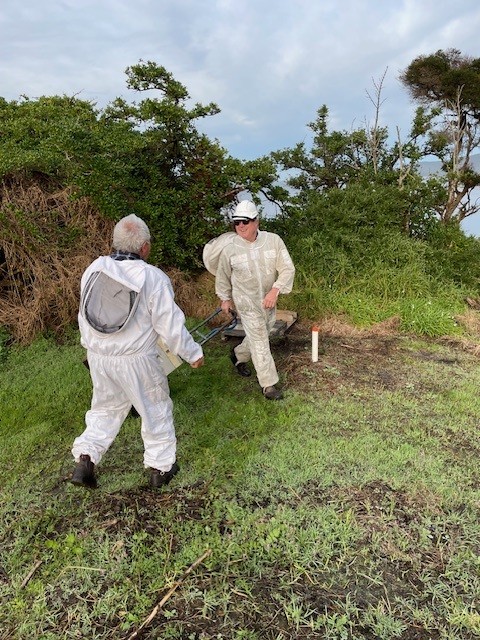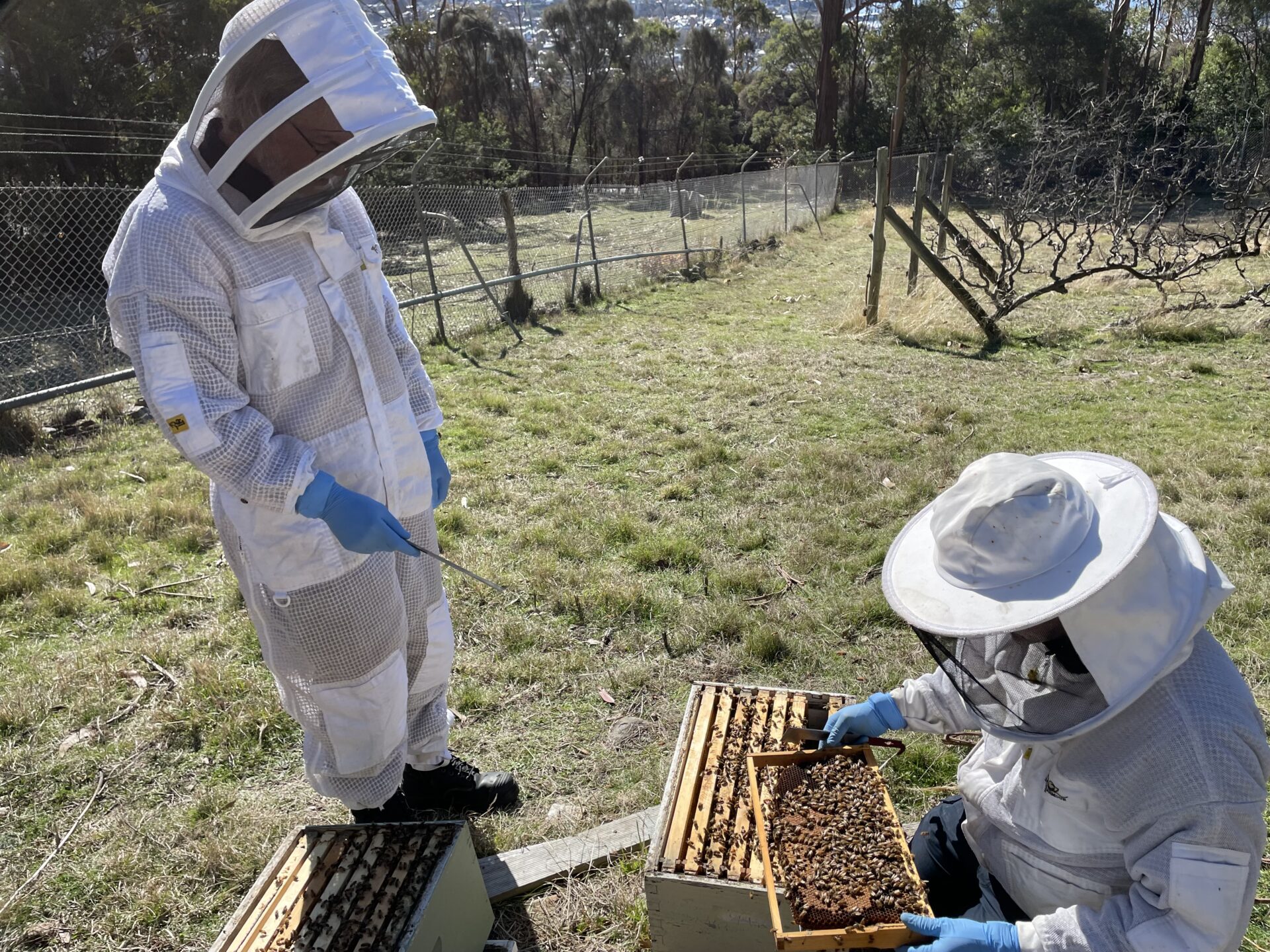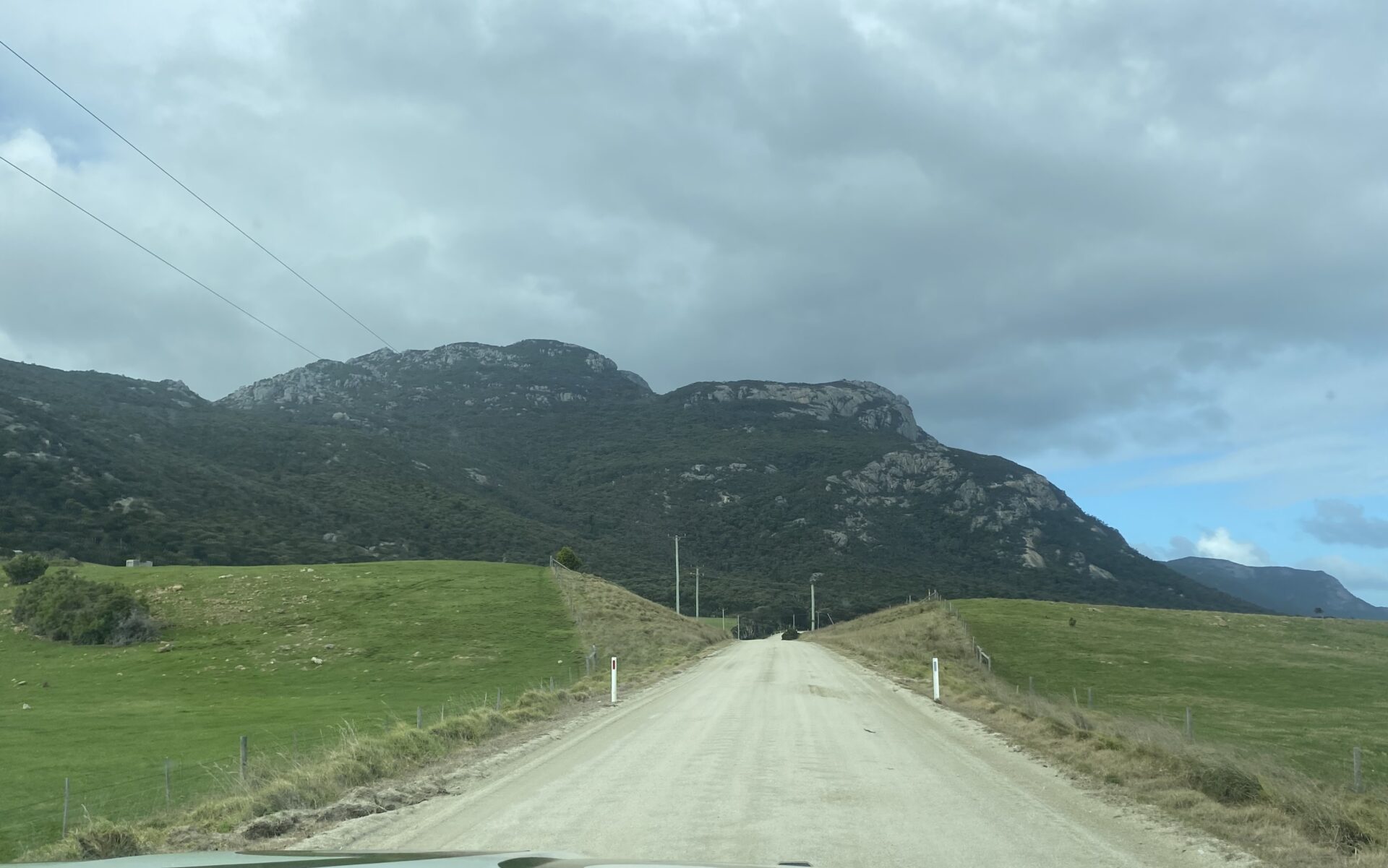Engagement Activities from the Tasmanian VDO on King and Flinders Islands
19 November 2025Article by: Tasmanian VDO Carson McGinty In July and August 2025, Tasmanian VDO Carson McGinty travelled to King Island and Flinders Island to meet with beekeepers both commercial and recreational […]

Article by: Tasmanian VDO Carson McGinty
In July and August 2025, Tasmanian VDO Carson McGinty travelled to King Island and Flinders Island to meet with beekeepers both commercial and recreational with a focus on varroa extension and education, surveillance, and management.
While there Carson also strengthened the detection capacity of the state by acquiring and setting up new sentinel hives at Port Grassy on King Island, and Port Lady Barron on Flinders Island.
Carson was assisted in contacting local beekeepers and the set-up of the sentinel hives by Tasmanian Biosecurity Officer Jason Pierce, located on King Island, and Tasmanian Biosecurity Officers Phil Smith and Daniel Whiting on Flinders Island. Their local knowledge and relationships with beekeepers on the islands were critical in enabling contact and engagements with the diverse and at times rather geographically isolated beekeepers on the islands.

A workshop was held in the evening during each visit where we went over the threat of varroa, its biology, how it spreads, and the mechanical and chemical management techniques available. Carson also developed and supplied individualised Varroa treatment plans that were tailored to the climate of the islands. Carson also provided ample time for Q & A as this is the place where it is best to identify the knowledge gaps regarding varroa, as well as ease any fears regarding a detection.

The days were spent visiting beekeepers (in between the wind and the rain) and providing practical demonstrations on surveillance and monitoring, as well as building up their knowledge of beekeeping in general. Engagements were tailored to the experience of the individual, and Carson was assured everyone was left with a flood of information, practical methods for detection, and management tools should varroa be detected.

The reception from each group was fantastic, and on King Island a commercial beekeeper offered to assist recreational beekeepers with developing their general skills as beekeepers in addition to their monitoring for Varroa. It was great to see a dedicated community focused approach to keeping Varroa out of the islands, as this is the real path towards keeping varroa out Tasmania as well.

Varroa Extension and Engagement Outcomes in Tasmania:
- Learning and development of participants regarding both varroa management, and general beekeeping knowledge
- Increased varroa mite surveillance and reporting across the two islands
- Increased bee biosecurity across two major regions of Tasmania
- Increased positive relations between the T2M Program, Tasmanian Biosecurity, and beekeepers on King Island and Flinders Island
- Fostering and development of a communal and collaborative approach to keeping varroa out of the islands.

Find a VDO in your area!

